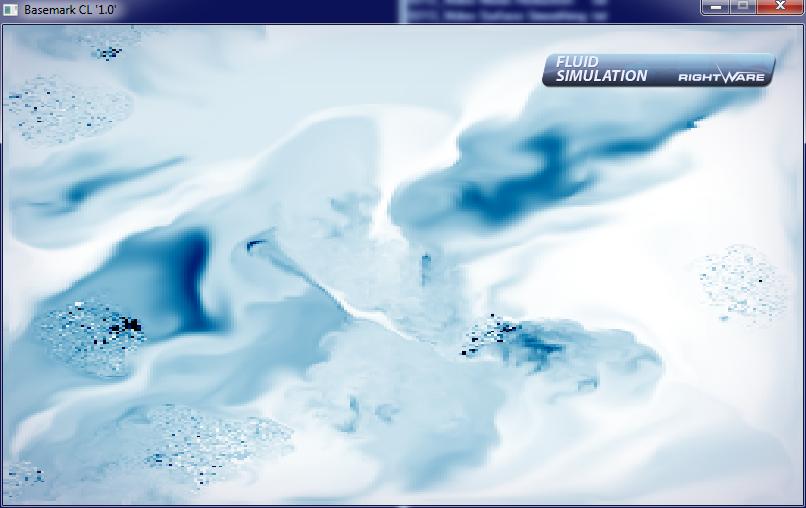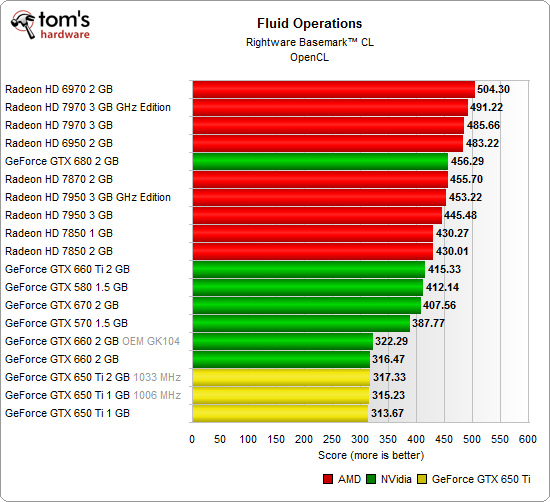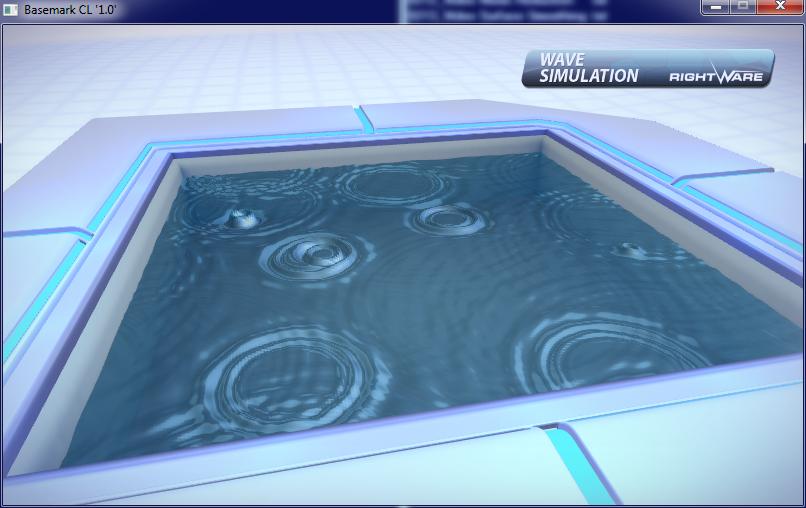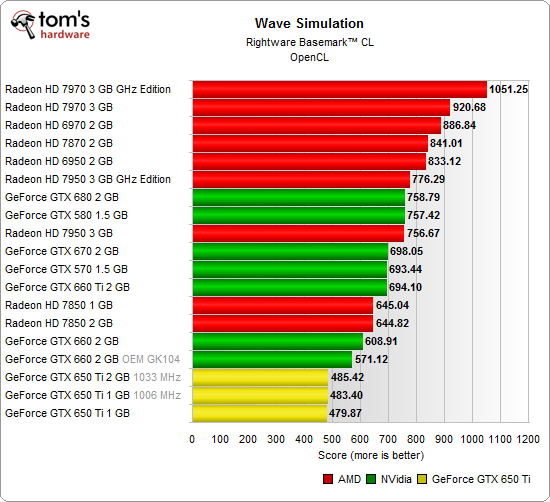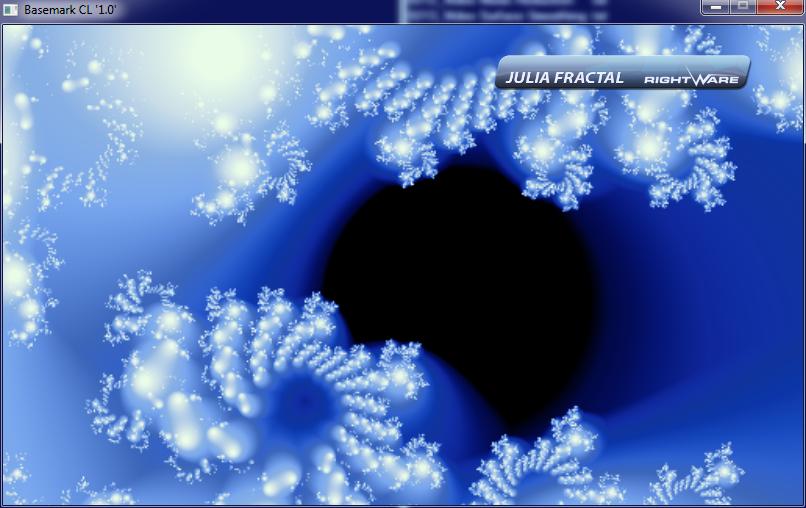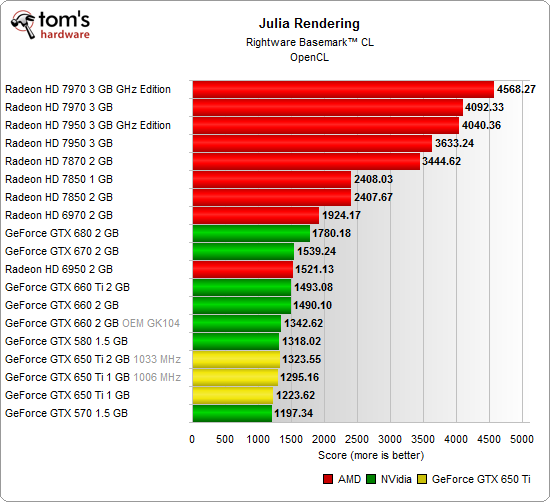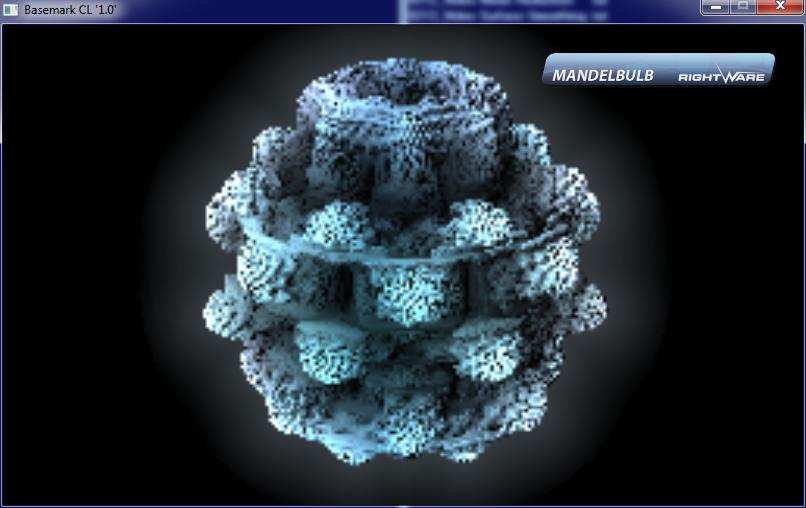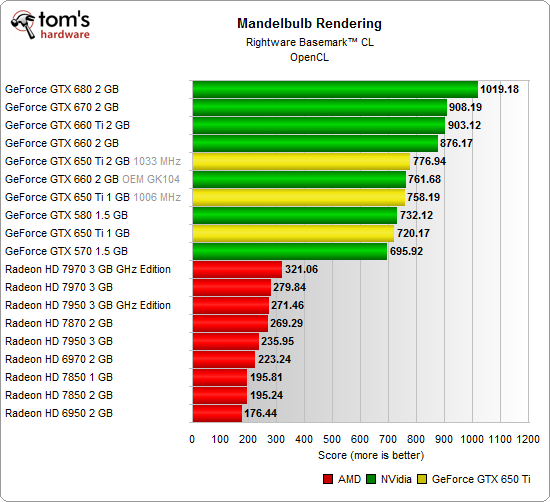GeForce GTX 650 Ti Review: Nvidia's Last Graphics Card For 2012
Nvidia's new GeForce GTX 650 Ti is designed to fill the gap between its GeForce GTX 650 and 660. Is the GK106-based board fast enough to outmaneuver classics like the GeForce GTX 460 and Radeon HD 6850? Or, should you be looking to a 1 GB Radeon HD 7850?
OpenCL: GPGPU Benchmarks (Basemark CL)
Fluid Operations
The performance delta between the GeForce GTX 650 Ti and the GTX 660 is very slim indeed. Stepping up the GTX 660 Ti and the 670 yields a much bigger boost. Indeed, the lower-end model wins out over its bigger sibling in this discipline thanks to a higher clock rate.
Interestingly, the factory-overclocked GeForce GTX 650 Ti shows no such improvement. Only the pricier cards with more shader processors appear to benefit from higher frequencies.
Wave Simulation
Wave simulations also aren't the GeForce GTX 650 Ti’s forte, regardless of clock rate. Actually, the extra frequency does surprisingly little to help performance.
Julia Rendering
Julia fractal rendering allows the Kepler architecture shine a bit, and all three GeForce GTX 650 Ti models are able to squeeze in between the Fermi-based GeForce GTX 580 and 570.
Get Tom's Hardware's best news and in-depth reviews, straight to your inbox.
Mandelbulb Rendering
Whereas the Julia fractal test looked pretty bleak for Nvidia, the situation flips when it comes to Mandelbulb rendering. Within the GeForce portfolio, Nvidia’s newest release is not only able to beat the Fermi-based cards, but the factory-overclocked variants also take on the lower-clocked OEM version of the GeForce GTX 660. Meanwhile, AMD can’t come anywhere near the GeForces cards' performance
Current page: OpenCL: GPGPU Benchmarks (Basemark CL)
Prev Page OpenCL: GPGPU Benchmarks Next Page OpenCL: Image Processing (Basemark CL)Don Woligroski was a former senior hardware editor for Tom's Hardware. He has covered a wide range of PC hardware topics, including CPUs, GPUs, system building, and emerging technologies.
